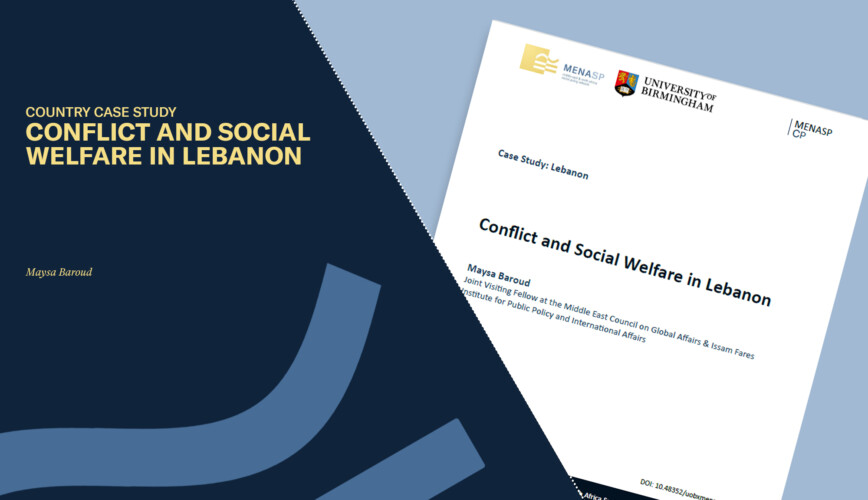Lebanon has experienced several crises and conflicts since its independence, including a more than decade-long civil war starting in 1975, with a direct impact on its social welfare system. The civil war resulted in the deterioration of basic services and available social welfare programmes in the country, creating a gap that was filled by non-state actors, including militias and political leaders. Post-civil war reconstruction, which prioritised the capital, Beirut, further entrenched existing socio-economic disparities between the city and other governorates.
Today, Lebanon’s political class continues to play a significant role in the provision of social services, either through charities and NGOs they are affiliated with or by exploiting social protection programmes available through the state, the result of which has been a deeply rooted clientelist system. Other non-state actors also provide social services, including religious charities, civil society, local non-governmental organisations, and international organisations. Furthermore, informal social protection, including remittances and social networks, has also emerged as a significant form of social welfare in the country.
Multiple crises since the civil war, including recurring political deadlock and the 2019 financial and economic collapse, have contributed to further breaking down Lebanon’s social welfare “system.” The current social welfare “system” remains highly fragmented, unequal, and exclusionary, with significant disparities in access among citizens and between citizens and non-citizens. Inequality (both vertical and horizontal), coupled with years of corruption, an unproductive economy, and high levels of unemployment, have long been drivers of protests and other forms of social movement in the country.
It is these possible connections between social welfare and conflict that this case study research on Lebanon sets out to explore. Social welfare, in the context of this study, is viewed as “incorporating social protection as well as services relating to health, social security, education, employment, social work, and the provision of basic infrastructure such as electricity, water, and waste management” (Walton, forthcoming). As for conflict, we adopt a broad definition that includes “both organised armed violence and some forms of non-violent conflict such as protests…[but] omits certain categories of violence – criminal violence, terrorism, or specific literature on mass violence e.g. genocide” (Walton, forthcoming).
The case study complements the MENASP-CP Citizen Survey[1] and employs a qualitative approach to explore the connections between social welfare and conflict. It is organized into two main sections: the context and background section, which provides a historical overview of conflict and social movements in Lebanon, describes available social protection programmes, and highlights the role of state and non-state actors in welfare provision. The findings section presents the main themes that emerged from the fieldwork, linking these back to the literature and the main research aims.
[1] This case study was conducted as part of a project: ‘Social protection and sustainable peace in the Middle East and North Africa Region: Building a new welfare-centered politics’ (AH/T008067/2) funded by GCRF.
DOI: 10.48352/uobxmenasp.0028
Author: Maysa Baroud, Joint Visiting Fellow at the Middle East Council on Global Affairs & Issam Fares Institute for Public Policy and International Affairs
This project is supported by the Middle East and North Africa Social Policy Network (MENASP) at the University of Birmingham, in the framework of its ‘strengthening social welfare and security in the MENA region’ research programme, funded by the UK Arts and Humanities Research Council’s Global Challenges Research Fund.
Disclaimer: The opinions expressed in this publication are those of the authors. They do not purport to reflect the opinions or views of the Middle East and North Africa Social Policy (MENASP) Network or the University of Birmingham.
